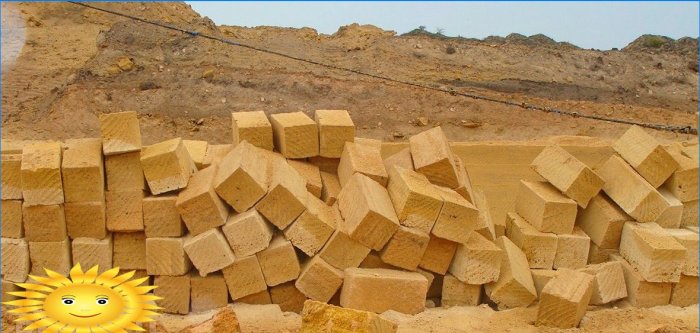
What is shell rock? This is a breed of mollusk shells that lived for a very long time in ancient seas. The shells accumulated at the bottom, the seas were shrinking, shells of mollusks from limestone crumbled over time, broke, pressed under their own weight into a strong stone, ended up on land … The process was long, natural, but in the end, mankind received building material that is enough to cut into blocks of the necessary size to actively use. Nothing else is required, nature has taken care of everything.
It is clear that there are especially many shell rock near the existing seas or in the area where they existed many years ago. For example, in Russia, shell rock is mined in the Crimea, in Ukraine – in the Odessa region. We also wrote about shell rock for facade decoration as a Dagestan stone. And it is no coincidence, because shellfish in this region is very widespread and affordable.
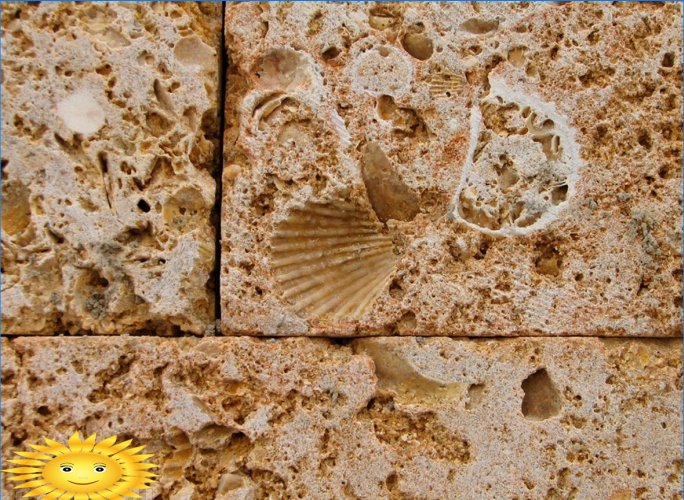
Shell rock has been used in construction for many centuries, the material is well known, but it never became widespread. This is mainly due to the narrow mining area. If near the sea they were and are building from shell rock very often, then in other regions this building material remains exotic, it is costly and often economically unprofitable to transport.
The benefits of shell rock include:
- The standard shell rock block is 180x180x380 mm. This is more than five times the size of a conventional brick. At the same time, the shell rock block weighs from 9 to 25 kg, depending on the density. The material is light enough and easy to use..
- For thousands of years, shell rock has been soaked in sea water, saturated with salt and iodine, the material is not just environmentally friendly, but also useful, allowing you to create a comfortable atmosphere in the house, favorable for living.
- The shell does not burn. Doesn’t burn at all. However, we admit that at temperatures above 250 degrees, the surface of the stone may begin to crumble.
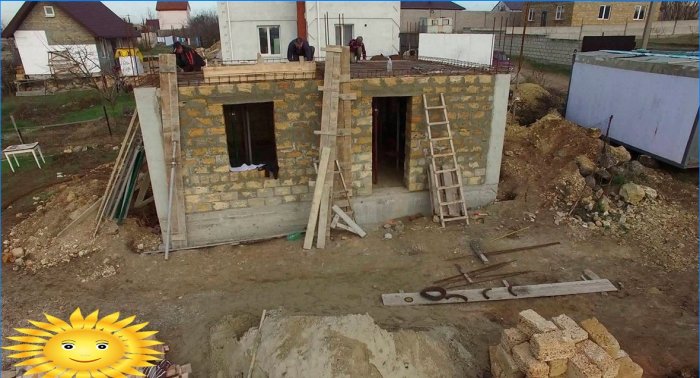
- Shell rock is the only material on the planet that does not transmit radiation at all. In this case, the natural radiation background of shell rock is about 13 μg / h, which is noticeably less than the norm.
- The material is porous, has a low coefficient of thermal conductivity, and is distinguished by noise insulation properties. According to the owners, the shell rock house is cool in summer, and in winter it stays warm for a long time.
- In terms of frost resistance, shell rock is almost twice as good as foam concrete and aerated concrete.
- The large dimensions of the stone allow you to build a house quickly, one block of shell rock replaces seven to nine bricks.
- Fungi and mold do not grow in shell rock.
- High adhesion. Plaster, cement mortar perfectly fits on porous shell rock.
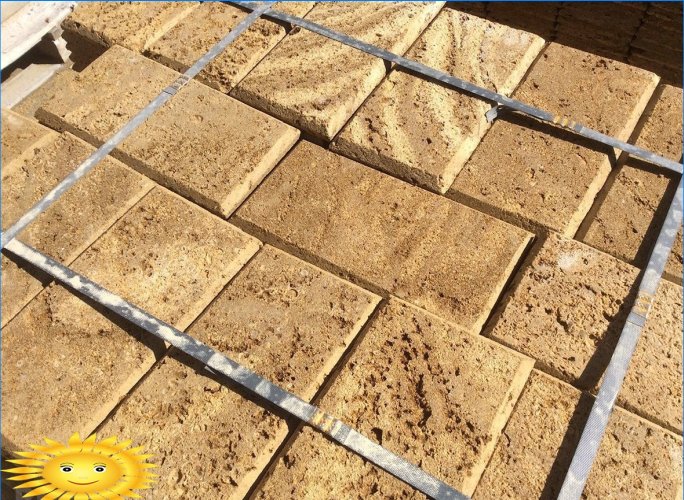
Note that shell rock is usually divided into the following brands:
- M15. This stone has a rich yellow hue, it is the most fragile of all, with a low density. The M15 brand is most often used for the construction of fences and outbuildings, it is not very suitable for a residential building.
- M25. Less bright yellowish tint, more durable, usually used for walls.
- M35. The densest, strongest shell rock of white-gray color with a minimum amount of sand. M35 blocks are the heaviest and hardest.
Due to the porosity of the shell rock, problems with wall mounting can arise. This disadvantage is especially noticeable in the M15 brand. It is best to use a chemical, liquid anchor to attach to a shell rock wall, such as a storage water heater.
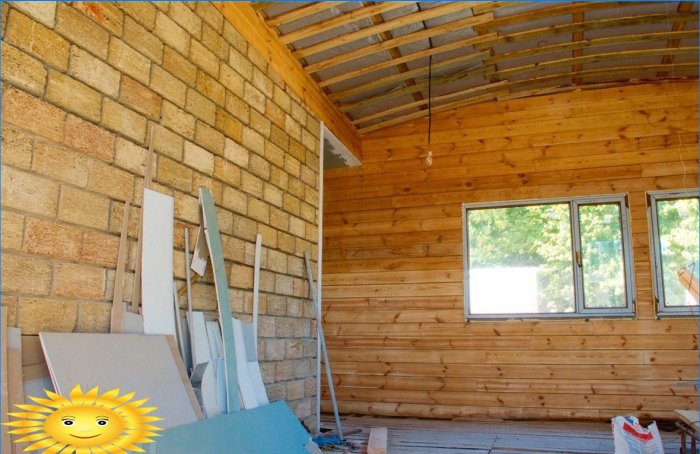
On the one hand, working with shell rock is simple – it is easy to saw, you can cut it off with an ax, no high qualification of a bricklayer is required. However, the shell rock is characterized by an uneven structure, there is no clear geometry and strict dimensions during mining in an open pit. A lot of time will have to be spent on fitting the wall blocks to size, sorting, rejecting. This process will be especially important if it is decided to leave the shell rock wall without plaster open. In this case, the laying will have to be carried out especially carefully in order to create a beautiful surface..
The main disadvantage of shell rock is its relatively low bearing capacity. High-rise buildings are not built from this material, the traditional maximum is three floors. However, this is more than enough for a private house, and as an additional measure, when installing floor slabs of a building, armored joints are created.
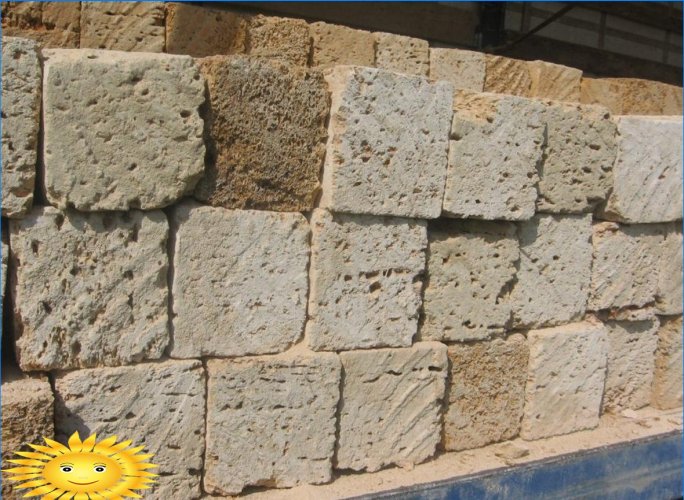
Another disadvantage of shell rock is the high degree of water absorption. Inside the home, the wall can be left untreated if you like the natural beauty of this stone. But on the outside, a shell rock house definitely needs additional protection from precipitation. Usually a layer of plaster is applied, the facade can be insulated. Before the end of this work, it is not recommended to proceed to the finishing of the interior..
We are sure that shell rock has more advantages as a building material. This is a worthy choice for building a private house. In Crimea, there are shell rock buildings that have stood for about 100 years, which proves the reliability and durability of this material, created by nature itself.

Can someone please provide more information about the construction features of a shell rock house? Additionally, I would love to know about the pros and cons of using this material in building a house. Any insights or personal experiences would be greatly appreciated!